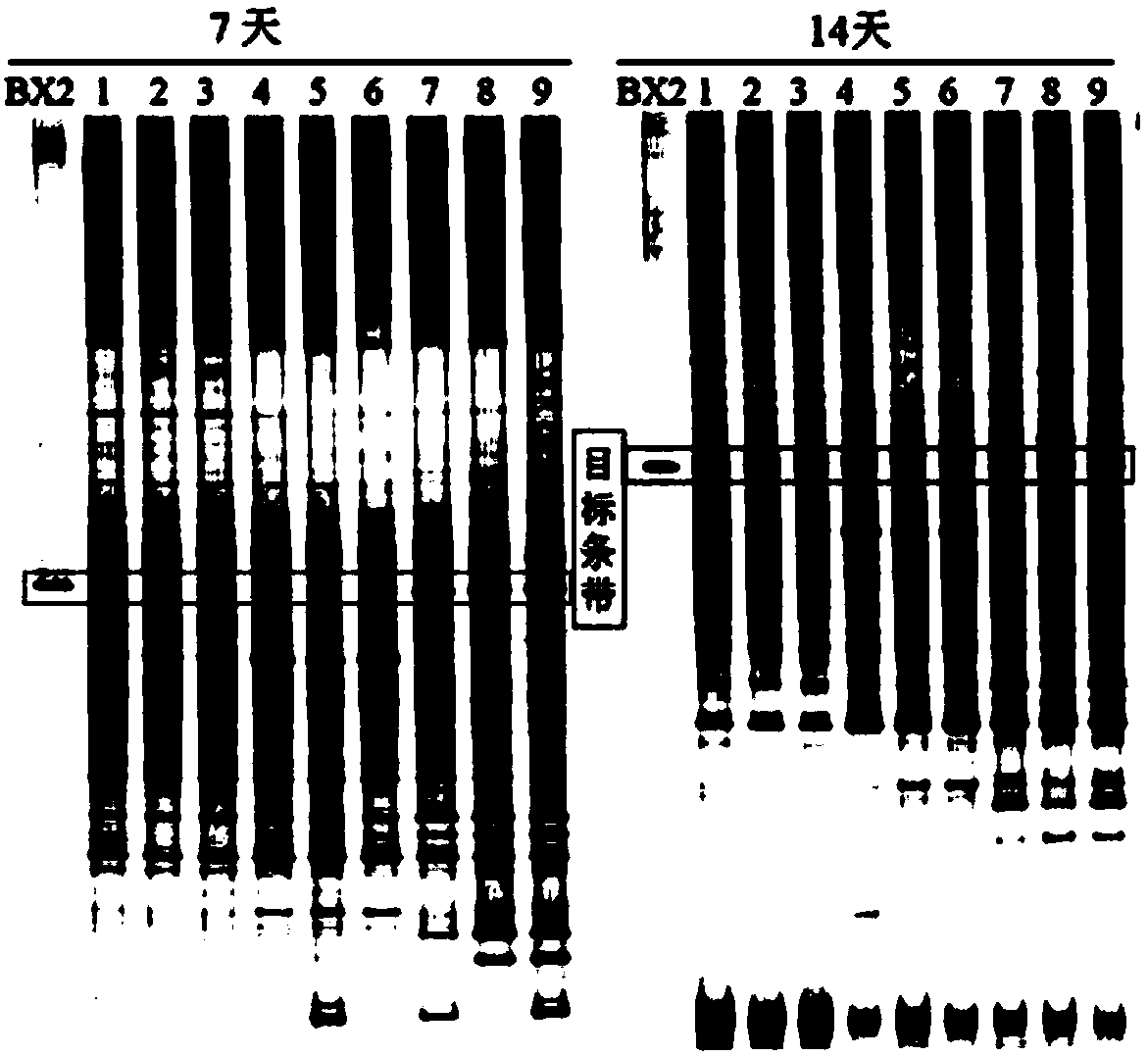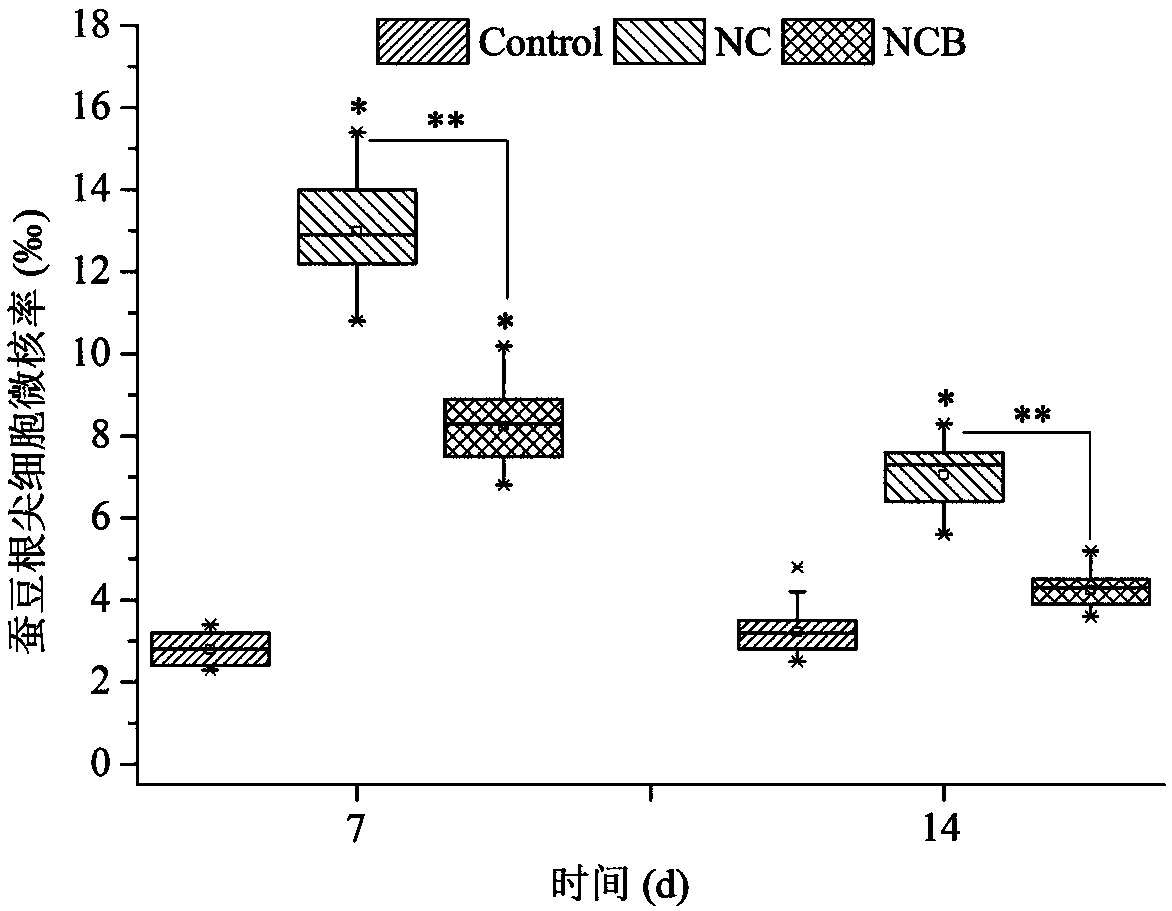Efficient degrading strain for chlorothalonil, and application of efficient degrading strain in greenhouse soil environment
A technology of chlorothalonil and degrading bacteria, which is applied to the high-efficiency degrading bacteria of chlorothalonil and its application in the greenhouse soil environment, can solve the problem of no report on bioremediation, and achieves the reduction of soil genotoxicity, high efficiency, and no bioremediation. The effect of secondary pollution
- Summary
- Abstract
- Description
- Claims
- Application Information
AI Technical Summary
Problems solved by technology
Method used
Image
Examples
Embodiment 1
[0015] Example 1 Growth of bacterial strain BJ1 in inorganic salt medium with chlorothalonil as the only carbon source and its degradation effect on chlorothalonil
[0016] Configure OD 600 The strain mother solution with a value of 1 was inoculated into an inorganic salt medium containing 50 mg / L chlorothalonil as the sole carbon source with an inoculum volume of 5% by volume. The liquid volume was 30 mL, the initial pH value was 6, and the culture temperature The temperature is 30°C, the rotation speed is 180rpm / min, no inoculation is used as the control, and 3 parallels are set for each treatment. After culturing for 1, 3, 5, and 7 days, the content of chlorothalonil in the culture medium was detected by gas chromatography. The results showed that after inoculation with chlorothalonil-degrading bacteria BJ1, the residual amount of chlorothalonil in the medium gradually decreased with time, and the residual amount of chlorothalonil was 3.4 mg / L after 7 days, and the degrada...
Embodiment 2
[0019] Colonization of the soil in the greenhouse environment of embodiment 2 bacterial strain BJ1
[0020] The experiment was carried out in the greenhouse of the Agricultural Demonstration Park of Qingdao Agricultural University. The soil used is taken from the demonstration garden, which is brown loam soil. The fungicide chlorothalonil was not detected in the soil by gas chromatography. The physical and chemical properties are: pH, 6.32; total organic carbon, 17.5g / kg; total nitrogen, 1.35g / kg; total phosphorus, 1.04g / kg. Transfer the soil through a 40-mesh sieve into 3L brown flowerpots, put 1.5kg of soil in each flowerpot, and set up 3 treatments in total: the soil without pesticides and bacteria is the control (CK), and only the pesticides are added. Soil without bacteria (NC), soil with pesticides and bacteria (NCB). Three parallel sets were set up for each treatment, with a total of 9 flower pots. The initial concentration of chlorothalonil added to the soil was 20...
Embodiment 3
[0021] Degradation of chlorothalonil in soil by bacterial strain BJ1 under embodiment 3 greenhouse environment
[0022] Soil treatment, concentration of chlorothalonil added, amount of bacteria BJ1 added and its culture conditions were the same as those of NC and NCB in Example 2. Samples were taken 2h, 3, 7, 10, 14, 21, and 28d after treatment, respectively, and the residual amount of chlorothalonil in the soil was detected by gas chromatography. The result is as figure 2 As shown, after the strain was added to the chlorothalonil-contaminated soil, the degradation rate of chlorothalonil was significantly increased, and the degradation half-life was shortened from 9.0d to 4.9d, and the degradation effect was better.
PUM
 Login to View More
Login to View More Abstract
Description
Claims
Application Information
 Login to View More
Login to View More - R&D
- Intellectual Property
- Life Sciences
- Materials
- Tech Scout
- Unparalleled Data Quality
- Higher Quality Content
- 60% Fewer Hallucinations
Browse by: Latest US Patents, China's latest patents, Technical Efficacy Thesaurus, Application Domain, Technology Topic, Popular Technical Reports.
© 2025 PatSnap. All rights reserved.Legal|Privacy policy|Modern Slavery Act Transparency Statement|Sitemap|About US| Contact US: help@patsnap.com



